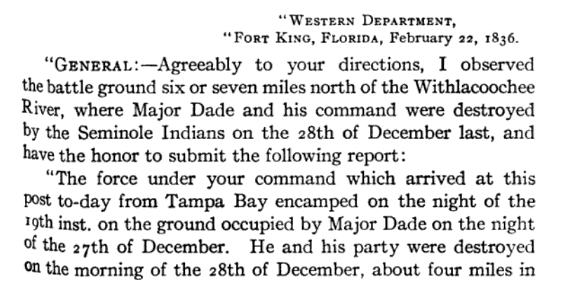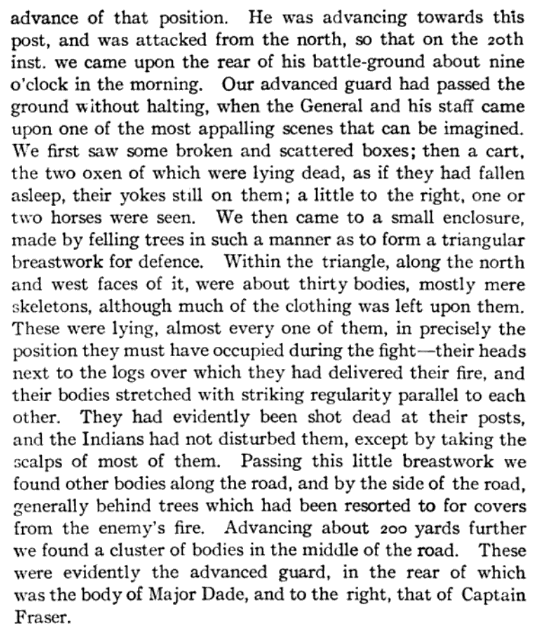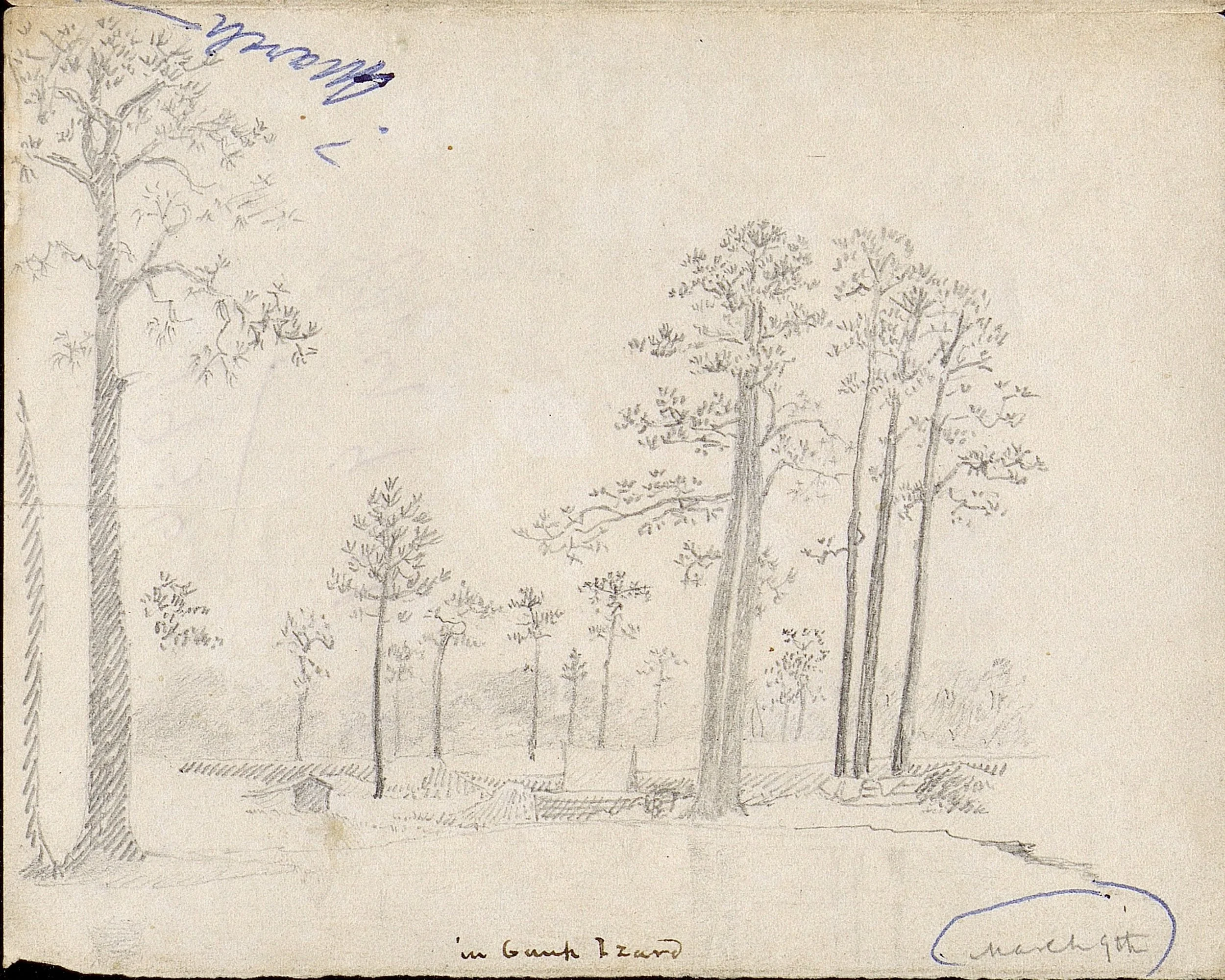Seth Howard’s Experiences During His Three Months Serving with the Louisiana Volunteers
In a previous post, I laid out my proof argument confirming that Seth Howard joined Captain Burt’s Company of Louisiana Volunteers after they arrived at Fort Brooke on February 11, 1836. Using this fact, and various first-hand accounts, the following information about Seth Howard’s service with the Louisiana Volunteers can be inferred:
The Louisiana Volunteers, under the command of Col. P.F. Smith, arrived at Fort Brooke on the 9th-11th of February 1836. Upon arrival, Captain James Barr noted:
BARR, James., DADE, Francis Langhorne. A Correct and Authentic Narrative of the Indian War in Florida, with a description of Maj. Dade's massacre, etc. United States: J. Narine, 1896. (pages 2-3). (Read for free on Google Books)
Engraving of Fort Brooke. 1838. State Archives of Florida, Florida Memory. <https://www.floridamemory.com/items/show/33406>, accessed 15 August 2024.
About 1,000 men marched out from Fort Brooke, under the command of General Gaines, on February 13th. Only Captain Barr’s Company and Captain Henry S. Mark’s Company stayed back. Thus, Seth Howard, as part of Captain Burt’s Company would have marched out on the 13th as well.
BARR, James., DADE, Francis Langhorne. A Correct and Authentic Narrative of the Indian War in Florida, with a description of Maj. Dade's massacre, etc. United States: J. Narine, 1896. (page 3).
BARR, James., DADE, Francis Langhorne. A Correct and Authentic Narrative of the Indian War in Florida, with a description of Maj. Dade's massacre, etc. United States: J. Narine, 1896. (page 4).
They first headed southeast to the Alafia River looking for hostile Indians.
BARR, James., DADE, Francis Langhorne. A Correct and Authentic Narrative of the Indian War in Florida, with a description of Maj. Dade's massacre, etc. United States: J. Narine, 1896. (page 15).
Potter described it similarly, but actually mentions passing by <Seth> Howard’s ruined homestead:
The War in Florida: Being an Exposition of Its Causes, and an Accurate History of the Campaigns of Generals Clinch, Gaines and Scott. By a Late Staff Officer. United States: n.p., 1836. (pages 152-153) (Read for free on Google Books)
Eventually they started their way north and eventually crossed the Hillsborough River on February 17th and began making their way up the military road to Fort King and the relief of General Clinch who was supposed to be encamped there.
BARR, James., DADE, Francis Langhorne. A Correct and Authentic Narrative of the Indian War in Florida, with a description of Maj. Dade's massacre, etc. United States: J. Narine, 1896. (page 15).
But on February 20th, they found the site of Dade’s Massacre. The men buried the dead in a mass grave inside the breastwork erected by Dade’s men and another mass grave for the eight officers was created on the outside of the breastwork and the canon was placed, muzzle down, to mark their grave.
This map was drawn by Wooburne Potter and is included in his book “The War in Florida: Being an Exposition of Its Causes, and an Accurate History of the Campaigns of Generals Clinch, Gaines, and Scott”Map of the battle and massacre ground of Major Dade and command. 1836. State Archives of Florida, Florida Memory. <https://www.floridamemory.com/items/show/33686>, accessed 30 July 2024.
BARR, James., DADE, Francis Langhorne. A Correct and Authentic Narrative of the Indian War in Florida, with a description of Maj. Dade's massacre, etc. United States: J. Narine, 1896. (pages 15-16).
As noted in Fifty Years in Camp and Field, “Captain Hitchcock wrote the official account of this reconnaissance of the battle-ground which is found in the War archives as follows:”
Hitchcock, Ethan Allen. Fifty Years in Camp and Field: Diary of Major-General Ethan Allen Hitchcock, U.S.A.. United Kingdom: G.P. Putnam's Sons, 1909. (Read for free on Google Books)
The men marched on and reached Fort King on February 22nd. Imagine their surprise when they arrived, out of provisions, only to find that Fort King was in sore need of provisions as well and that General Clinch was nowhere to be found. He had removed himself and his men to Auld Lang Syne, the name of his plantation, and renamed it Fort Drane after adding some pickets for protection. Gaines sent some of the enlisted men to get General Clinch and his supplies, because the men were out of food. Col. Smith and his Louisiana Volunteers stayed near Fort King and waited for the rations to arrive.
A map of Fort King as found in Lieut. Henry Prince Diary (1836-1842) https://ufdc.ufl.edu/AA00017215/00001/images/4
The men sent to Fort Drane arrived back at Fort King with food and supplies on the 24th of February. Even with this influx, there wasn’t much food, so Gaines had the whole group march out on the 26th. On the 27th, while trying to ford the Withlacoochee River, they were fired upon by the Seminoles and a skirmish ensued during which Smith’s Volunteers returned fire.
BARR, James., DADE, Francis Langhorne. A Correct and Authentic Narrative of the Indian War in Florida, with a description of Maj. Dade's massacre, etc. United States: J. Narine, 1896. (pages 16-17).
A map of Camp Izard as found in Lieut. Henry Prince Diary (1836-1842) https://ufdc.ufl.edu/AA00017215/00001/images/21
The next morning on the 28th, they attempted to ford the river again and around 9am, they were fired upon again. Lt. Izard was shot and killed. The attack continued most of the day and Gaines directed that a breastwork be erected. He named it Camp Izard. On the 29th, they were attacked by the Seminoles in earnest. The breastwork was rushed by the enemy. They tried to set fire to the breastwork, but the wind changed direction and pushed the fire back towards the Seminoles instead. Below is a map of Camp Izard and it is noted where Captain Burt’s Company was set up in defense as labeled by position “6” per the key at the bottom of the map. As Seth Howard was a member of Captain Burt’s Company, it is likely that he was part of the battle at Camp Izard and fought in that exact location.
This map was drawn by Wooburne Potter and is included in his book “The War in Florida: Being an Exposition of Its Causes, and an Accurate History of the Campaigns of Generals Clinch, Gaines, and Scott”
The Seminoles besieged the group of men within the breastwork and this lasted for several days. The men ran out of food. As noted in Canter Brown’s article in The Journal of the Louisiana Historical Association, “Day after day the attackers maintained their siege. Gaines sent out pleas for relief while food supplies dwindled. ‘As our provisions diminished,’ one officer recalled, ‘we began to inquire into the virtues of roots, and the comparative excellence of horse meat.... At length bread, corn, and meat disappeared, and some of the men were two days without food.’
BARR, James., DADE, Francis Langhorne. A Correct and Authentic Narrative of the Indian War in Florida, with a description of Maj. Dade's massacre, etc. United States: J. Narine, 1896. (pages 18-19).
Potter notes in his account:
The War in Florida: Being an Exposition of Its Causes, and an Accurate History of the Campaigns of Generals Clinch, Gaines and Scott. By a Late Staff Officer. United States: n.p., 1836. (pages 152-153) (Read for free on Google Books)
Drawing of Camp Izard as found in Lieut. Henry Prince Diary (1836-1842) “Amidst a Storm of Bullets” https://ufdc.ufl.edu/AA00017215/00001/images/46
The siege was lifted on March 5th when General Clinch arrived with food and supplies. William T Thompson’s account of the entire event is told in a much more humorous spirit (click to view larger):
Thompson, William Tappan, 1812-1882. John's Alive: Or, the Bride of a Ghost. Baltimore: Taylor, Wilde, 1846. (Read it for free on Hathi Trust)
On March 10th, the men marched back to Fort Drane and arrived there on March 11th at about 7 pm. The Louisiana Volunteers stayed near Fort Drane, about 3 miles away at a place they named camp Smith until March 26th; at which time they went off towards the Withlacoochee River yet again. As explained by Potter:
The War in Florida: Being an Exposition of Its Causes, and an Accurate History of the Campaigns of Generals Clinch, Gaines and Scott. By a Late Staff Officer. United States: n.p., 1836. (pages 166-168)
They arrived at the Withlacoochee Cove on March 30th and started making their way through the swampy land and water where they again engaged with the Seminoles. The Louisiana Volunteers were the first across the river per some accounts, or only near the front per other accounts. The Louisiana Volunteers were involved in small engagements with the enemy on the 30th and 31st. William T Thompson wrote about the skirmishes and what he had to say is as follows:
Jones, Joseph., Wade, May A. Thompson. John's Alive: Or, The Bride of a Ghost, and Other Sketches. United States: D. McKay, 1883. (Read it for free on Google Books)
Eventually, the men were ordered back to Fort Brooke where they arrived on April 5th. On April 10th, the Louisiana Volunteers “sailed from Fort Brook to Charlotte Harbor” (Cantor Brown’s article for in The Journal of the Louisiana Historical Association) where they landed on April 17th. On April 18th, the men started making their way up the Peace River from Punta Gorda. One group followed the river by land and the other group sailed up the Peace River. The heat and lack of supplies soon made it obvious that this would be hard-going, and Col. Smith allowed those who wanted to do so to turn back. Only 130 to 150 stayed with him.
BARR, James., DADE, Francis Langhorne. A Correct and Authentic Narrative of the Indian War in Florida, with a description of Maj. Dade's massacre, etc. United States: J. Narine, 1896. (pages 25-28).
It is impossible to know if Seth Howard turned back or continued with Col. Smith. On one hand, it is likely that he did not continue up the Peace River as the over-whelming majority of the men did not (about 80%). On the other hand, he was a Floridian, and NOT a Louisianian, and thus had a knowledge of the land and familiarity to the climate that the bulk of the group did not possess. As researchers, it is likely that we will never know. Here is Col. P.F. Smith’s account to General W. Scott of the expedition:
The entire group of Louisiana Volunteers returned to Fort Brooke on April 25th. P.F. Smith went to Tallahassee on April 30th, and his volunteers started being shipped out on May 1st. Captain Burt’s Company was mustered-out on May 12, 1836, in New Orleans, although Seth Howard would have remained in Hillsborough County.
Army and Navy chronicle v.3 (1836) on Hathi Trust (https://babel.hathitrust.org/cgi/pt?id=umn.31951000747318a&seq=93).
This has been such a fun experience! I have had an absolute blast reseaching the experiences of the Louisiana Volunteers in 1836. Even though Seth Howard didn’t write any of these accounts, he was there when all of this was happening and by reading the diaries and field notes of these other soldiers and volunteers, I have been able to piece together a rich and detailed picture of Seth Howard’s experiences serving with Captain Burt’s Company.
Many thanks to Seminole Wars expert, Jesse Marshall for all of his help and experience. This post would not have been nearly as robust without his guidance and expertise.





















































